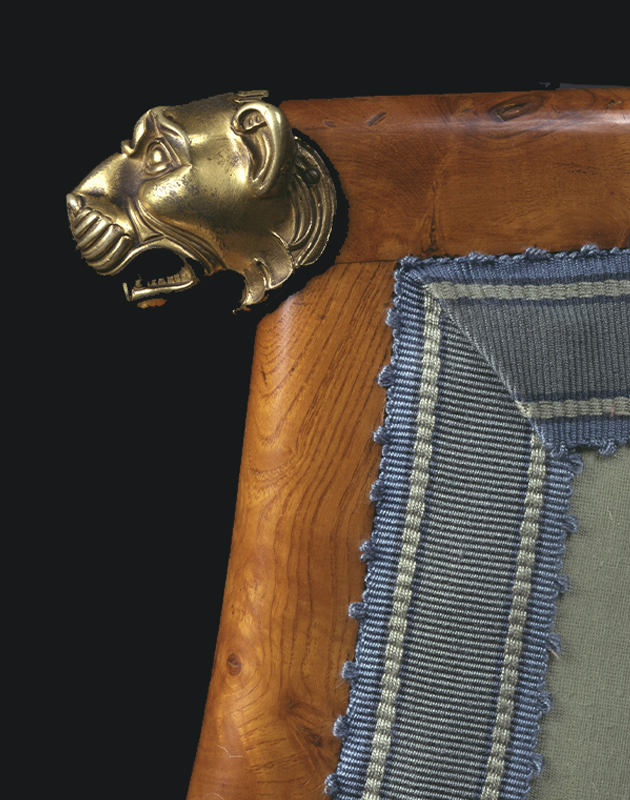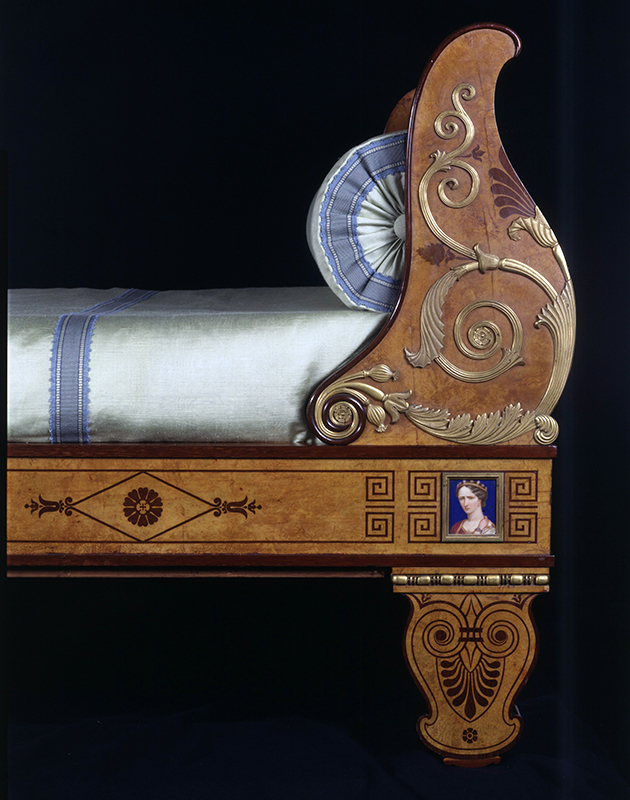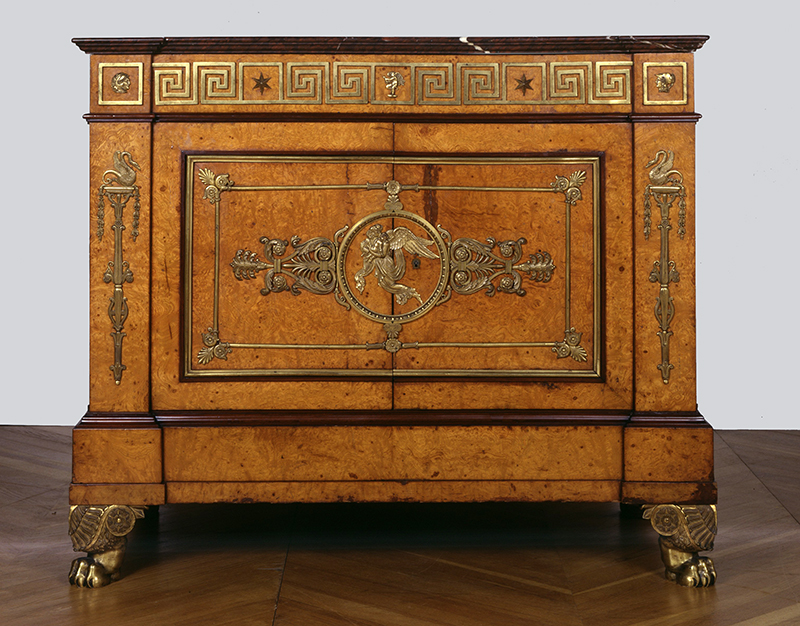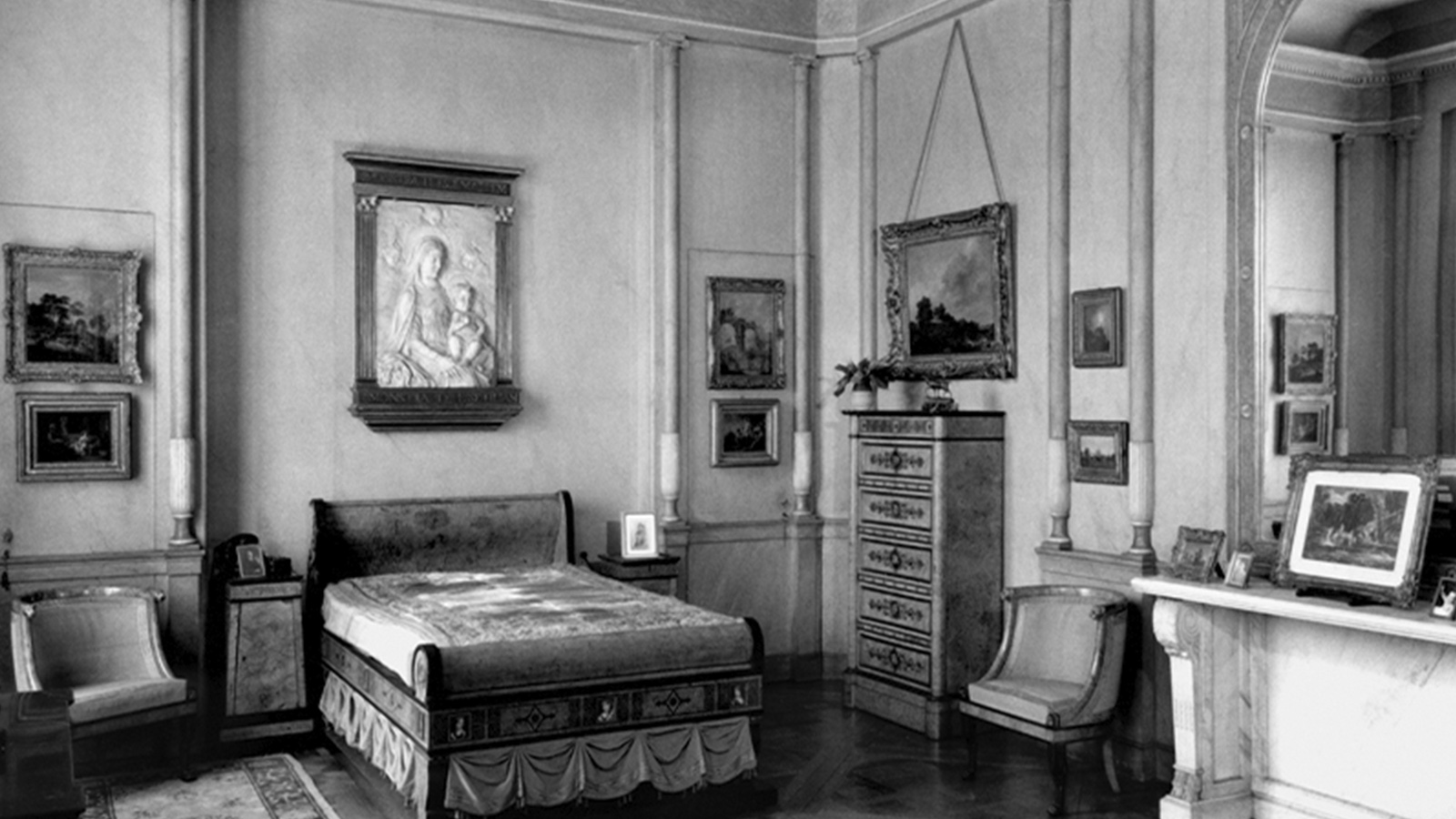The furniture in the François-Joseph Talma room
Gulbenkian studied every aspect of the property in detail before commencing renovation works, consulting several architects and other professionals who would help to transform the building. When Calouste Gulbenkian purchased the hôtel particulier at 51 Avenue d’Iéna at the age of 53, the 36-metre wide avenue was home to members of the elite, including financiers and collectors. Gulbenkian studied every aspect of the property in detail before commencing renovation works, consulting several architects and other professionals who would help to transform the building.
The decoration of the interior spaces in the house was another of the collector’s concerns. Besides the masterpieces in his collection, which included paintings, sculptures, tapestries, books and furniture, among others, Gulbenkian also acquired everyday objects, such as the ‘Talma’ furniture attributed to Joseph-Marie Bénard (c. 1820–c. 1936).


This set of furniture in the French Restoration style, made from oak, exotic woods such as amaranth and mahogany, gilt bronze and brass, included a bed, a chest of drawers and a pair of chairs. These pieces were placed in Gulbenkian’s room, which was located in the collector’s private quarters on the third floor of the building.
They were known as ‘Talma’ as they had previously belonged to the famous French actor François-Joseph Talma (1763-1826). Born in France, Talma spent his younger years working at amateur theatres before making his professional debut in 1787 at the Comédie Française in the 1er arrondissement in the heart of Paris.

The actor was known for the precision of his historical costumes, which differed from the contemporary dress usually worn in plays at that time. Another of his contributions to theatre was a new method of declamation, which was more realistic and less exaggerated, using more moderate diction.
For political reasons, Talma left the Comédie Française and founded the Théâtre de la Republique, where he produced classical French plays and translations of Shakespeare’s work. Talma was admired by critics and became Napoleon Bonaparte’s favourite actor. The actor was depicted by several artists, who portrayed him in the role of striking figures such as Nero in the case of Jean Racine’s Britannicus. Portraits of the artist can be seen at the British Museum in London, Walters Art Museum in Baltimore and the National Portrait Gallery in London.
Collection of Stories
Where have the artworks been, before being acquired by Calouste Gulbenkian? Who were their authors and their protagonists? What curiosities do they hide? In this series, discover the various stories behind the Museum's collection.

